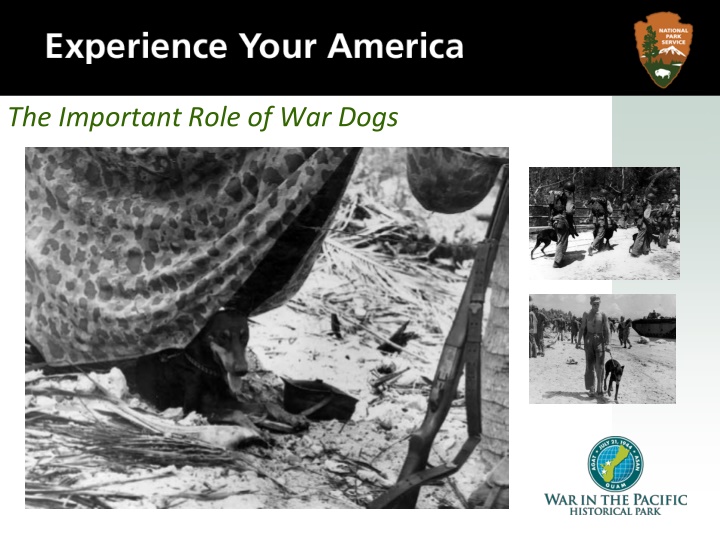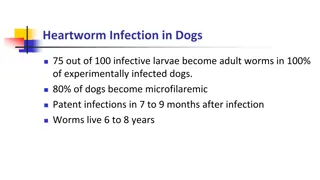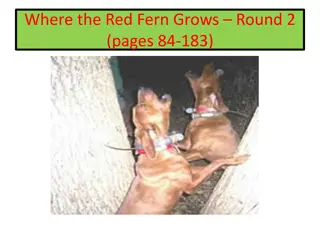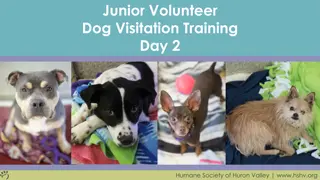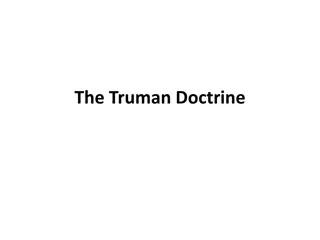The Important Role of War Dogs in WWII
War dogs played a crucial role during World War II, transitioning from their traditional use in polar regions to serving as sentries, messengers, mine detectors, and more in combat zones like Bougainville and Guam. The images illustrate the valor and contribution of Marine Corps' trained canines, enhancing troop morale and saving lives. The story of these "Devil Dogs" showcases their bravery and sacrifice in the battlefield alongside their handlers.
Download Presentation

Please find below an Image/Link to download the presentation.
The content on the website is provided AS IS for your information and personal use only. It may not be sold, licensed, or shared on other websites without obtaining consent from the author.If you encounter any issues during the download, it is possible that the publisher has removed the file from their server.
You are allowed to download the files provided on this website for personal or commercial use, subject to the condition that they are used lawfully. All files are the property of their respective owners.
The content on the website is provided AS IS for your information and personal use only. It may not be sold, licensed, or shared on other websites without obtaining consent from the author.
E N D
Presentation Transcript
Prior to WWII, the use of dogs in the military was limited to polar regions where they were used as sled dogs. Here are two attentive war dogs on the ship deck But during the second World War, 2,000 dogs were trained and sent overseas. War dogs first saw action in Bougainville.
These devil dogs were used on Guam as sentries, messengers, and mine detectors. Here are Marine Corp. Morris H. Calo and Corp. Fritz Von Margod, a devil dog, on a beach on Guam. July 29, 1944 They proved exceptionally useful in searching out the enemy in caves. They stood up well under fire, saved many lives, and were a boon to troop morale.
The U.S. Marine Corps used a team of 60 canines on Guam - primarily Doberman Pinschers, German Shepherds, and a few mongrels. Here are war dogs being fed.
Marine Devil Dogs were trained messengers and sentries. They also spotted snipers. July 22, 1944.
Marine Corps handlers and their 'Devil Dogs' on Guam. U.S. troops were not the only casualties of the battle for Guam. Overall, more than 20 U.S. combat dogs were killed in action and laid to rest with great affection and respect.
Analyzing Photographs & Prints 1) Observe 2) Reflect Identify and note details. Ask yourself the following questions: What did I notice first? What people and objects are shown? How are they arranged? What is the physical setting? What, if any, words do I see? What other details can I see? Generate and test hypotheses about the image. Why do you think this image was made? What s happening in the image? When do you think it was made? Who do you think was the audience for this image? What tools were used to create this? What can you learn from examining this image? What s missing from this image? If someone made this today, what would be different? What would be the same?
Write a caption for each of the following images that you see. OR Predict what will happen one minute after the scene shown in the following images. Now Let s Analyze!
A Devil Dog named Babe donated her blood to help other dogs still fighting.
A German Shepherd is being worked on by a Marine Corps Veterinarian.
Another newspaper article about Devil Dogs. August 9, 1944.
The War Dog Cemetery, originally sited along the Asan River, was moved to U.S. Naval Station, Guam in June 1994.
Analyzing Photographs & Prints 3) Further Investigation Ask questions to lead to more observations and reflections about these photos. What do you wonder about Who? What? When? Where? Why? How? information and understanding of World War II. How would you refine or revise the way history could be taught in schools? How would you expand or alter your textbook explanations of history based on these primary sources you just looked at? Consider how these photos support or challenge
Bibliography War in the Pacific National Historical Park. War Dogs. nps.gov. National Park Service, n.d. Web. 2 March 2011.
